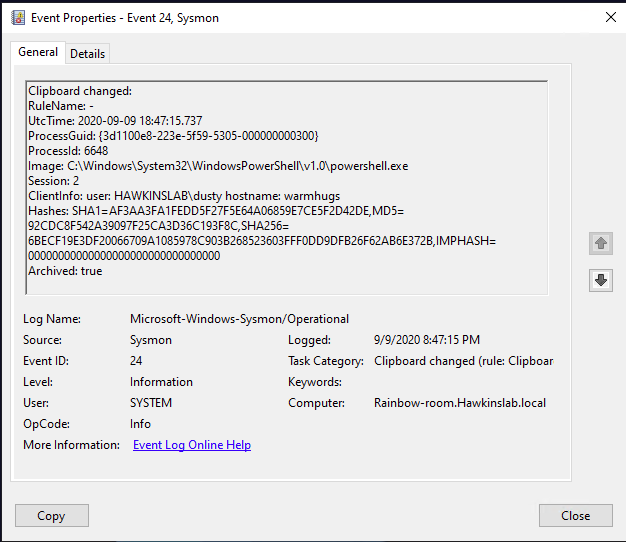A digest of popular science news for the week that we haven't written about
New drug developed to treat severe allergic reactions that does not require an injection

New device, recently approved The U.S. Food and Drug Administration may help allay some concerns. The device, Neffy, delivers epinephrine through a nasal spray rather than a needle.
Patient advocates and allergists who regularly see the effects of needle aversion have been waiting for an alternative to autoinjectors for years. Among the general population, the fear is relatively common—most children and up to 30 percent of young adults fear needles, according to one systematic review.
Ilana Golant, founder and executive director of the Food Allergy Foundation, says she knows parents who were so nervous about getting a shot that they missed a moment when they could have prevented a serious reaction, sending their child to the hospital.
Dr. Jonathan Spergel, an allergist at Children's Hospital of Philadelphia, said he was so concerned that some of his patients would not use the needle in an emergency that he asked them to get the shot in his office to show them it was “not that bad.”
There are many other reasons why patients might prefer a nasal spray even if they don’t have a fear of needles. For example, the Neffy nasal spray is relatively small — just over two inches tall — making it easier to carry than a bulky six-inch EpiPen. Autoinjectors have not yet been approved in Russia.
Rocket explodes during testing at UK's new Shetland spaceport

The rocket company has promised to return to regular operations “as soon as possible” after explosion during tests at the UK's new spaceport in the Shetland Islands.
The tests were carried out by German company Rocket Factory Augsburg (RFA), which hopes to carry out the UK's first vertical launch of a rocket into orbit.
The nine-engine test, which took place on Monday at the SaxaVord launch site on the island of Unst, was one of a number of tests to be carried out before launch.
RFA reported that the “anomaly” had resulted in the “loss of a stage” but that no one was hurt. “The launch pad has been rescued and secured, the situation is under control and any immediate danger has been eliminated.”
RFA, based in Augsburg, Germany, said it was working with the spaceport and authorities to find the cause of the failure.
A company spokesman said: “We develop iteratively, with a focus on real-world testing. “This is part of our philosophy and we were aware of the higher risks associated with this approach. Our goal is to return to regular operations as soon as possible.”
This comes three months after the site conducted its first successful missile test, in which RFA fired the engines for eight seconds and then shut them off.
New technology removes over 98% of nanoplastics from water

No one yet knows what threat plastic pollution poses to human health, but the recent realization that we are drinking invisible pieces of plastic in our water has caused understandable concern among many.
To prevent microplastics and nanoplastics from penetrating deep into our bodies and brains, researchers at the University of Missouri came up with a potentially sustainable and safe way to rid water of microscopic contaminants.
Using natural liquid ingredients with low toxicity, the research team showedwhich can remove about 98 percent of nanoscopic polystyrene beads from fresh and salt water.
The solvent the researchers created floats on the surface of water like oil. But give it a quick stir and — voila! — the liquid picks up microscopic plastics in the water and carries them to the surface.
By pipetting off the top layer of liquid, a team from the University of Missouri (Mizzou) found that they could remove nearly all of the nanoplastic beads from contaminated water samples. In salt water, the method was able to extract 99.8 percent of all polystyrene contaminants.

The proof of concept demonstrates a cost-effective and potentially “sustainable solution to the nanoplastic problem,” the Mizzou researchers say. With further research, the method could also be useful for cleaning up other pollutants in water, such as eternal chemicals.
New image of Polaris shows its spotted surface

Researchers using the Center for High Angular Resolution Astronomy (CHARA) array at Georgia State University determined new details about the size and appearance of the North Star. New study published in The Astrophysical Journal.
The Earth's north pole points in a direction in space marked by Polaris. Polaris is both a navigational aid and a remarkable star in its own right. It is the brightest member of a triple star system and a pulsating variable star. Polaris periodically brightens and dimmers as the star's diameter increases and decreases over a four-day cycle.
Polaris is a type of star known as a Cepheid variable. Astronomers use these stars as “standard candles” because their true brightness depends on their pulsation period: Brighter stars pulsate more slowly than dimmer ones. How bright a star appears in the sky depends on its true brightness and its distance from the star. Because we know the true brightness of a Cepheid variable from its pulsation period, astronomers can use them to measure the distances to the galaxies they reside in and to infer the rate at which the universe is expanding.
A team of astronomers led by Nancy Evans of the Center for Astrophysics at Harvard and the Smithsonian observed Polaris using the CHARA optical interferometer array of six telescopes on Mount Wilson, California. The goal of the study was to map the orbit of a nearby, faint satellite that orbits Polaris every 30 years.
“The small distance between the two stars and the large contrast in brightness make it extremely challenging to resolve the binary system during their closest approach,” Evans said.
To kill mammoths during the Ice Age, people stuck spears into the ground instead of throwing them.

How did early humans use sharpened stones to kill megafauna 13,000 years ago? Did they throw spears with carefully crafted, razor-sharp stones called Clovis points? Did they surround mammoths and mastodons and stab them? Or did they scavenge wounded animals, using Clovis points as a general-purpose tool to extract meat and bones for food and provisions?
Archaeologists at the University of California, Berkeley, say the answer may be quite different.
Instead, the researchers believe humans may have planted the spear in the ground and angled it upward to strike an attacking animal. The force would have driven the spear deeper into the predator's body, delivering a more devastating blow than even the strongest prehistoric hunters were capable of.
Drawing on numerous written and artistic sources, a team of Berkeley archaeologists analyzed historical evidence from around the world of people hunting with spears.
They also conducted the first experimental study of stone weapons focused on pike hunting techniques, and found out how the spears responded to the simulated force of an approaching animal. Once the sharpened stone penetrated flesh and activated the attachment system, they said, the spearhead acted like a modern hollow-point bullet and could inflict serious wounds on mastodons, bison, and saber-toothed cats.
“This ancient Native American design was a remarkable innovation in hunting strategy,” says Scott Byram, a research scientist at the Berkeley Archaeological Research Center and first author of a paper on the topic published in the journal PLOS ONE.
“This unique indigenous technology provides a window into the world of hunting and survival techniques that have been used for thousands of years around the world.”
A historical review and an experiment may help solve a mystery that has been vexing archaeological circles for decades: How did North Americans actually use Clovis points, some of the most commonly found Ice Age artifacts?
Named after the town of Clovis, New Mexico, where the stones were first found nearly a century ago, Clovis points were made from rocks such as kert, flint, or jasper.
They range in size from a human thumb to an average iPhone and feature a crisp, razor-sharp edge and grooved indentations on either side of the base. Thousands of them have been found across the United States, and some have even been found in preserved mammoth skeletons.





